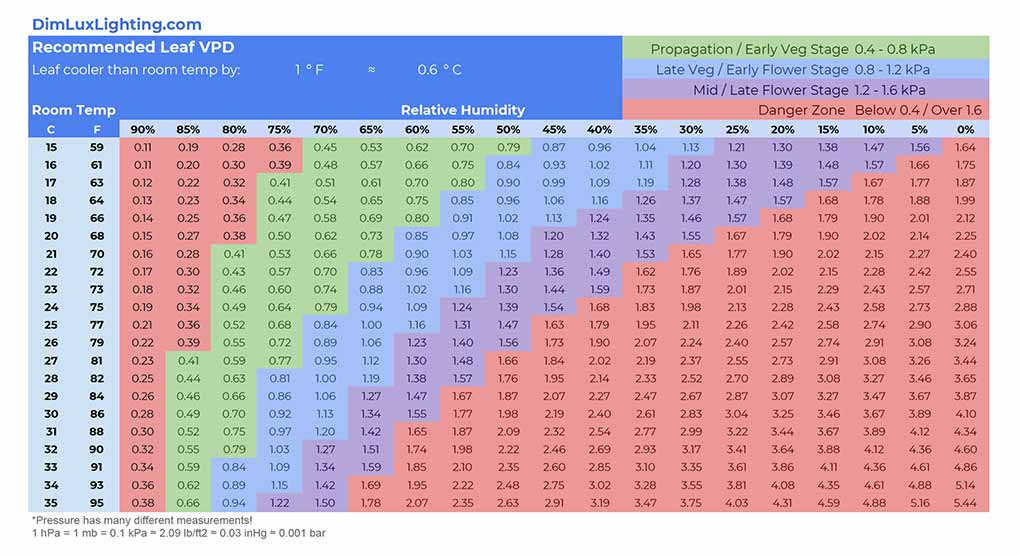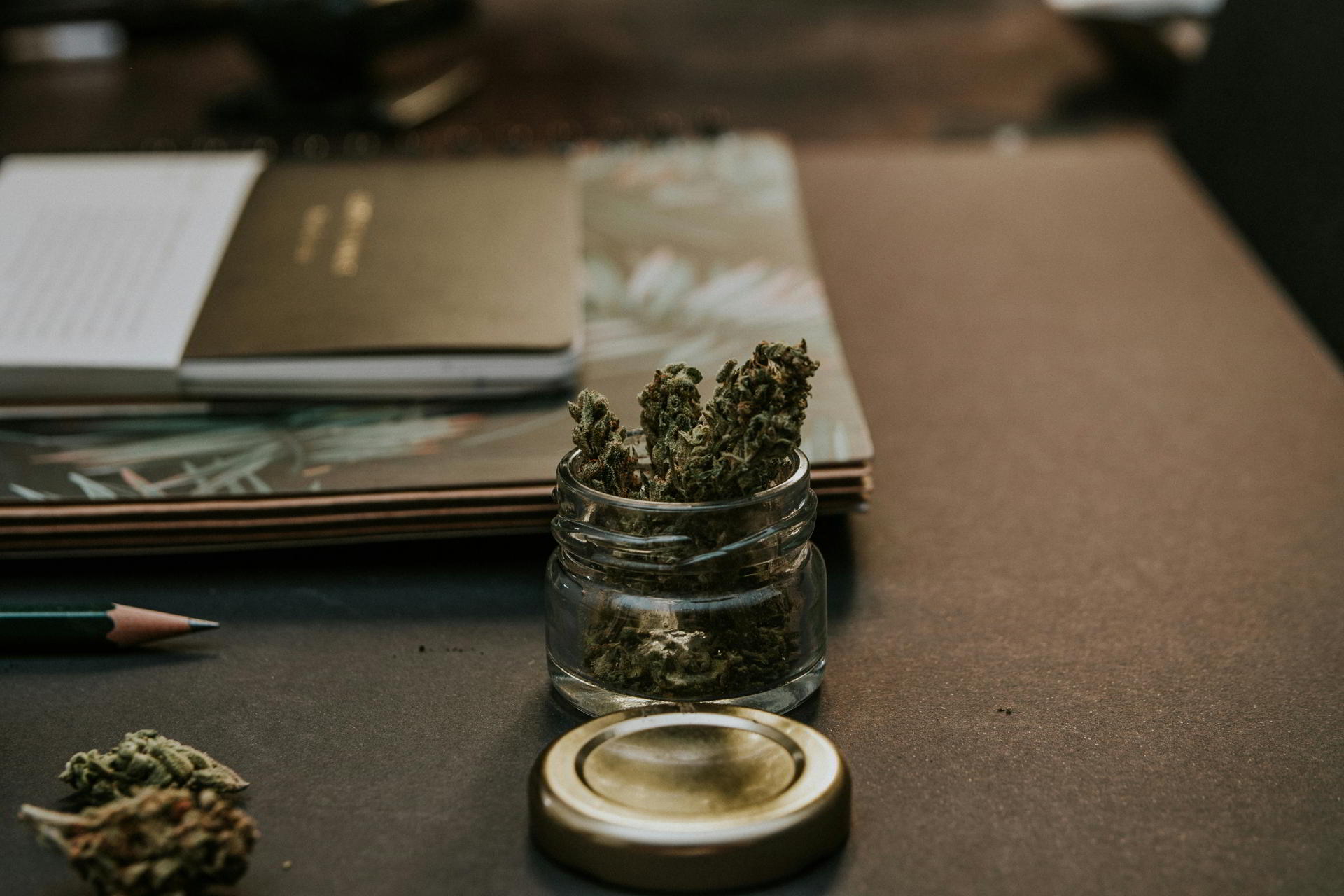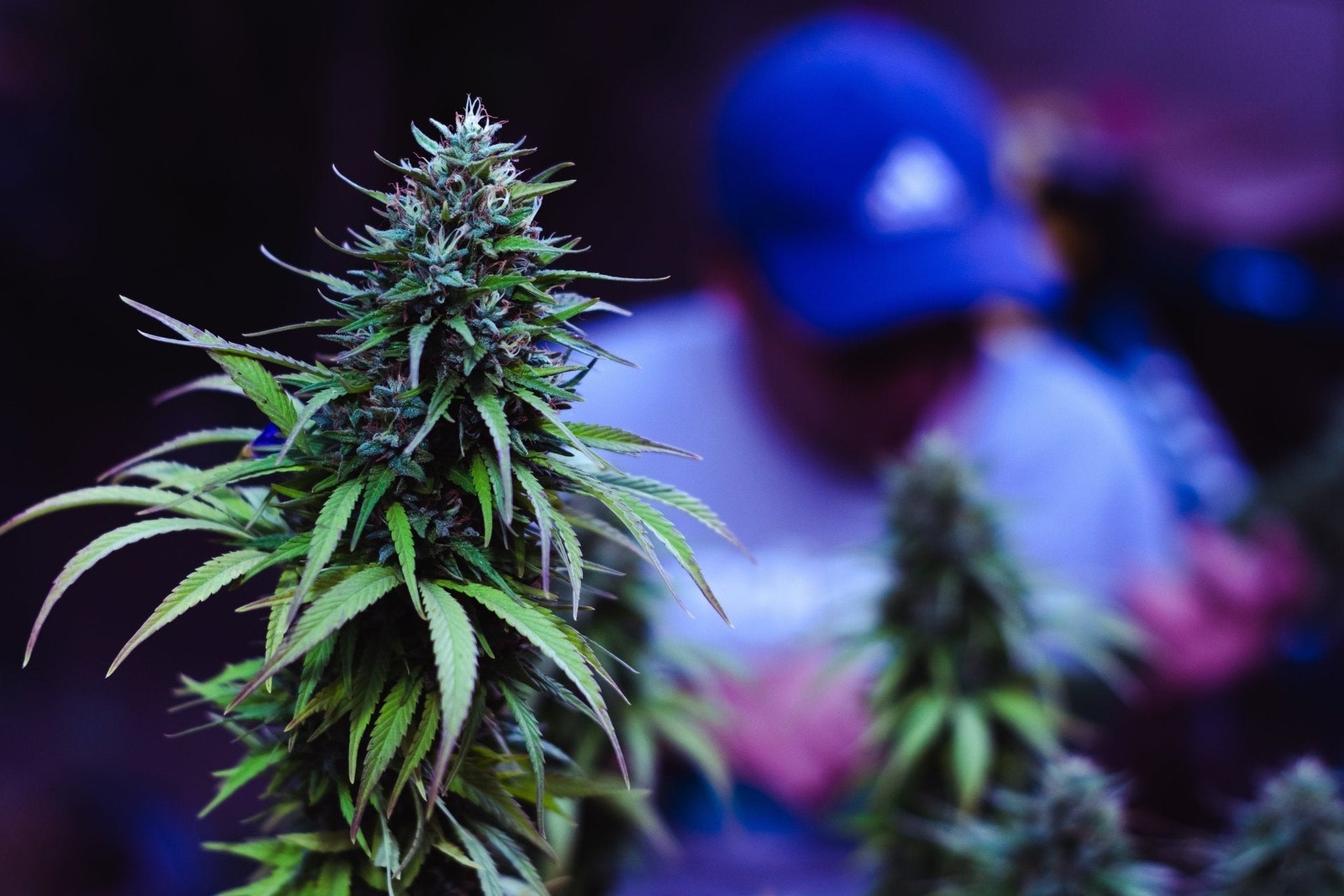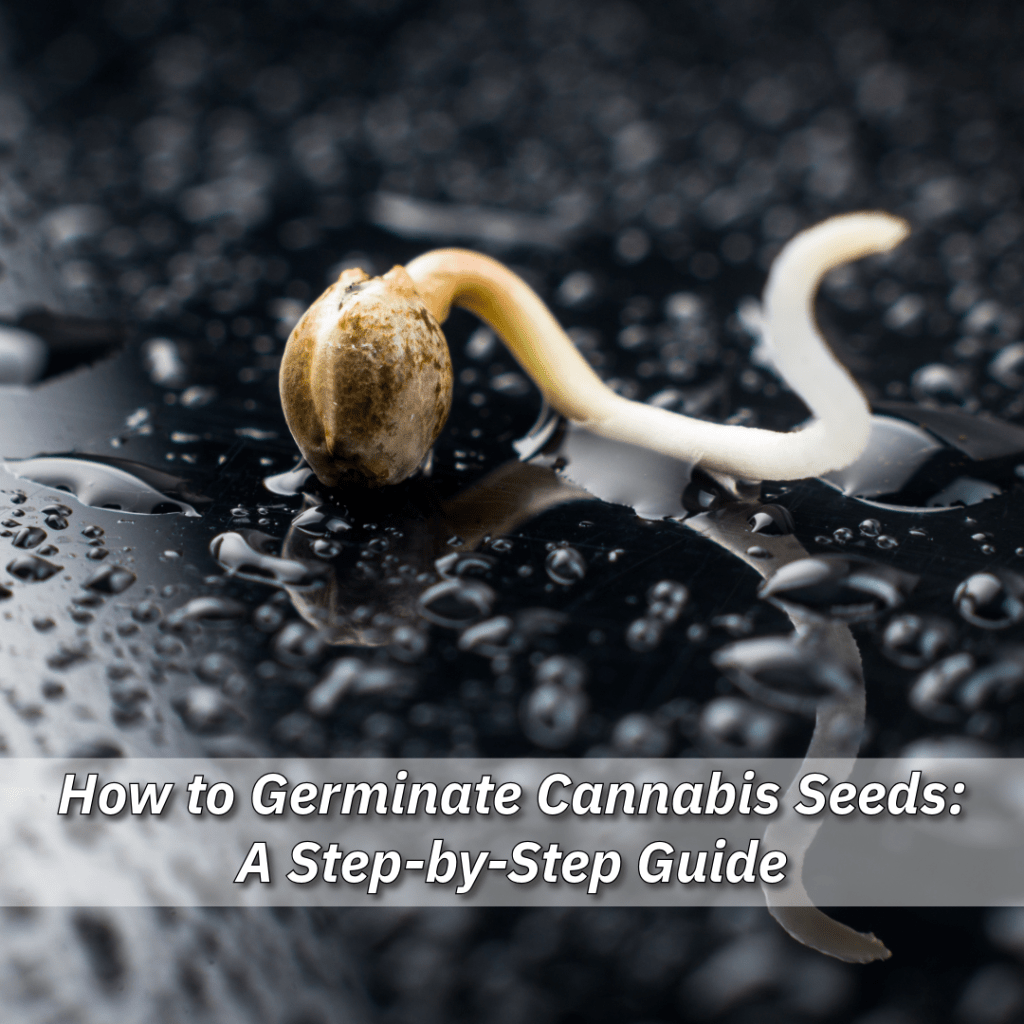
Maximize Your Yield: VPD and CO₂ Optimization in Cannabis Cultivation
Successful cannabis cultivation starts with precise control of key environmental factors. Two of the most critical variables are VPD (Vapor Pressure Deficit) and CO₂ concentration within the grow environment. When managed properly, these factors can significantly boost plant growth and yield. However, even minor mistakes can lead to plant stress or mold issues.
In this guide, we’ll cover the essentials of VPD regulation and CO₂ optimization to help you achieve the best possible results whether in an indoor grow setup or professional greenhouse cultivation.
1. Understanding VPD: What It Is and Why It Matters
What is VPD?
VPD measures the difference between the actual humidity in the air and the maximum possible humidity at a given temperature. It directly affects how efficiently plants transpire and absorb nutrients.
Why is VPD Crucial for Cannabis Growth?
✔ Improved Water and Nutrient Uptake: An optimal VPD encourages steady transpiration and nutrient absorption.
✔ Reduced Mold and Pathogen Risks: Controlling VPD helps prevent excess moisture, which can cause mold and mildew.
✔ Enhanced Growth and Yield: Maintaining the right VPD throughout growth stages ensures strong plant development.
💡 Tip: A VPD outside the optimal range can cause water stress, slow growth, or increase the risk of fungal infections.
2. The Importance of Leaf Temperature in VPD Regulation
Leaf temperature often differs from room temperature due to transpiration. Measuring the leaf temperature accurately ensures correct VPD calculations.
✔ Example: If your room temperature is 25°C, but the leaf temperature is 22°C, your VPD will be different than if the leaf temperature matched the room temperature.
✔ Use an IR Thermometer: This allows precise leaf temperature measurement for better VPD control.
✔ Impact of CO₂: Higher CO₂ levels can cause stomata (leaf pores) to close slightly, affecting transpiration rates.
3. Optimal VPD Values for Each Growth Stage
💡 Remember: Always calculate VPD based on leaf temperature, not just ambient room temperature. Use a VPD Calculator to determine the most accurate values.
✔ Seedling Stage: 0.8–1.2 kPa (Higher humidity supports early growth.)
✔ Vegetative Stage: 1.0–1.4 kPa (Encourages rapid development and strong roots.)
✔ Flowering Stage: 1.2–1.6 kPa (Reduces mold risk and enhances resin production.)
Practical VPD Management
✔ Temperature Control: Use heaters or air conditioning.
✔ Humidity Adjustment: Use humidifiers or dehumidifiers as needed.
✔ Air Circulation: Fans help distribute heat and humidity evenly.
4. CO₂ Optimization: The Key to Explosive Growth

Why is CO₂ Essential?
Carbon dioxide (CO₂) is a crucial factor in photosynthesis. Increasing CO₂ levels can accelerate plant growth and boost yields by up to 30%, provided other conditions are optimal.
✔ Improved Photosynthesis Efficiency: More CO₂ = more energy production.
✔ Lower Transpiration Demand: Higher CO₂ levels allow plants to retain more moisture.
✔ Faster Growth: Plants absorb nutrients more effectively in CO₂-enriched environments.
💡 Tip: CO₂ enhancement is most effective in closed grow environments where airflow is controlled.
5. Best CO₂ Concentrations for Cannabis Growth
The ideal CO₂ concentration depends on the plant’s growth stage:
✔ Seedlings: Max 400 ppm (ambient CO₂ is sufficient).
✔ Vegetative Stage: 800–1,000 ppm (Boosts leaf and root growth).
✔ Flowering Stage: 1,200–1,500 ppm (Maximizes bud development).
✔ Final Two Weeks: Reduce to ~600 ppm (Prevents delayed ripening).
💡 Important: Plants do not benefit from CO₂ levels above 1,500 ppm unless light intensity is at least 1,200 PPFD.
6. The Perfect Combination: VPD & CO₂

✔ Optimized VPD = Maximum nutrient absorption.
✔ Controlled CO₂ Levels = More efficient photosynthesis.
✔ Combined Effect = Higher yields, stronger plants, and more potent buds.
💡 Achievable Yields:
With a well-optimized VPD and CO₂ setup, growers have successfully achieved yields of up to 2.6g per watt under optimal lighting and nutrient conditions.
Example (Flowering Phase):
✔ Temperature: 26–29°C
✔ Humidity: 50–60%
✔ VPD: 1.2–1.6 kPa
✔ CO₂: 1,000–1,500 ppm
By mastering the combination of VPD management and CO₂ optimization, you can significantly enhance the growth, potency, and yield of your cannabis plants. Adjusting your grow conditions based on these principles will lead to healthier plants and better harvests.
📌 Frequently Asked Questions (FAQ)
1. What is the best VPD range for cannabis?
The ideal VPD depends on the growth stage:
✔ Seedlings: 0.8–1.2 kPa
✔ Vegetative: 1.0–1.4 kPa
✔ Flowering: 1.2–1.6 kPa
2. Why should I reduce CO₂ levels in the last two weeks of flowering?
High CO₂ levels can slow the final ripening process. Reducing CO₂ to 600 ppm ensures proper cannabinoid and terpene development.
3. Can I achieve higher yields with proper VPD and CO₂?
Yes! With optimized VPD and CO₂ levels, yields of up to 2.6g per watt are achievable under high-intensity lighting (1,200 PPFD+).
4. How do I measure VPD accurately?
Use a VPD Calculator (Try this one) and ensure you're measuring leaf temperature instead of just air temperature.
Successful cannabis cultivation starts with precise control of key environmental factors. Two of the most critical variables are VPD (Vapor Pressure Deficit) and CO₂ concentration within the grow environment. When managed properly, these factors can significantly boost plant growth and yield. However, even minor mistakes can lead to plant stress or mold issues.
In this guide, we’ll cover the essentials of VPD regulation and CO₂ optimization to help you achieve the best possible results whether in an indoor grow setup or professional greenhouse cultivation.
1. Understanding VPD: What It Is and Why It Matters
What is VPD?
VPD measures the difference between the actual humidity in the air and the maximum possible humidity at a given temperature. It directly affects how efficiently plants transpire and absorb nutrients.
Why is VPD Crucial for Cannabis Growth?
✔ Improved Water and Nutrient Uptake: An optimal VPD encourages steady transpiration and nutrient absorption.
✔ Reduced Mold and Pathogen Risks: Controlling VPD helps prevent excess moisture, which can cause mold and mildew.
✔ Enhanced Growth and Yield: Maintaining the right VPD throughout growth stages ensures strong plant development.
💡 Tip: A VPD outside the optimal range can cause water stress, slow growth, or increase the risk of fungal infections.
2. The Importance of Leaf Temperature in VPD Regulation
Leaf temperature often differs from room temperature due to transpiration. Measuring the leaf temperature accurately ensures correct VPD calculations.
✔ Example: If your room temperature is 25°C, but the leaf temperature is 22°C, your VPD will be different than if the leaf temperature matched the room temperature.
✔ Use an IR Thermometer: This allows precise leaf temperature measurement for better VPD control.
✔ Impact of CO₂: Higher CO₂ levels can cause stomata (leaf pores) to close slightly, affecting transpiration rates.
3. Optimal VPD Values for Each Growth Stage
💡 Remember: Always calculate VPD based on leaf temperature, not just ambient room temperature. Use a VPD Calculator to determine the most accurate values.
✔ Seedling Stage: 0.8–1.2 kPa (Higher humidity supports early growth.)
✔ Vegetative Stage: 1.0–1.4 kPa (Encourages rapid development and strong roots.)
✔ Flowering Stage: 1.2–1.6 kPa (Reduces mold risk and enhances resin production.)
Practical VPD Management
✔ Temperature Control: Use heaters or air conditioning.
✔ Humidity Adjustment: Use humidifiers or dehumidifiers as needed.
✔ Air Circulation: Fans help distribute heat and humidity evenly.
4. CO₂ Optimization: The Key to Explosive Growth

Why is CO₂ Essential?
Carbon dioxide (CO₂) is a crucial factor in photosynthesis. Increasing CO₂ levels can accelerate plant growth and boost yields by up to 30%, provided other conditions are optimal.
✔ Improved Photosynthesis Efficiency: More CO₂ = more energy production.
✔ Lower Transpiration Demand: Higher CO₂ levels allow plants to retain more moisture.
✔ Faster Growth: Plants absorb nutrients more effectively in CO₂-enriched environments.
💡 Tip: CO₂ enhancement is most effective in closed grow environments where airflow is controlled.
5. Best CO₂ Concentrations for Cannabis Growth
The ideal CO₂ concentration depends on the plant’s growth stage:
✔ Seedlings: Max 400 ppm (ambient CO₂ is sufficient).
✔ Vegetative Stage: 800–1,000 ppm (Boosts leaf and root growth).
✔ Flowering Stage: 1,200–1,500 ppm (Maximizes bud development).
✔ Final Two Weeks: Reduce to ~600 ppm (Prevents delayed ripening).
💡 Important: Plants do not benefit from CO₂ levels above 1,500 ppm unless light intensity is at least 1,200 PPFD.
6. The Perfect Combination: VPD & CO₂

✔ Optimized VPD = Maximum nutrient absorption.
✔ Controlled CO₂ Levels = More efficient photosynthesis.
✔ Combined Effect = Higher yields, stronger plants, and more potent buds.
💡 Achievable Yields:
With a well-optimized VPD and CO₂ setup, growers have successfully achieved yields of up to 2.6g per watt under optimal lighting and nutrient conditions.
Example (Flowering Phase):
✔ Temperature: 26–29°C
✔ Humidity: 50–60%
✔ VPD: 1.2–1.6 kPa
✔ CO₂: 1,000–1,500 ppm
By mastering the combination of VPD management and CO₂ optimization, you can significantly enhance the growth, potency, and yield of your cannabis plants. Adjusting your grow conditions based on these principles will lead to healthier plants and better harvests.
📌 Frequently Asked Questions (FAQ)
1. What is the best VPD range for cannabis?
The ideal VPD depends on the growth stage:
✔ Seedlings: 0.8–1.2 kPa
✔ Vegetative: 1.0–1.4 kPa
✔ Flowering: 1.2–1.6 kPa
2. Why should I reduce CO₂ levels in the last two weeks of flowering?
High CO₂ levels can slow the final ripening process. Reducing CO₂ to 600 ppm ensures proper cannabinoid and terpene development.
3. Can I achieve higher yields with proper VPD and CO₂?
Yes! With optimized VPD and CO₂ levels, yields of up to 2.6g per watt are achievable under high-intensity lighting (1,200 PPFD+).
4. How do I measure VPD accurately?
Use a VPD Calculator (Try this one) and ensure you're measuring leaf temperature instead of just air temperature.




